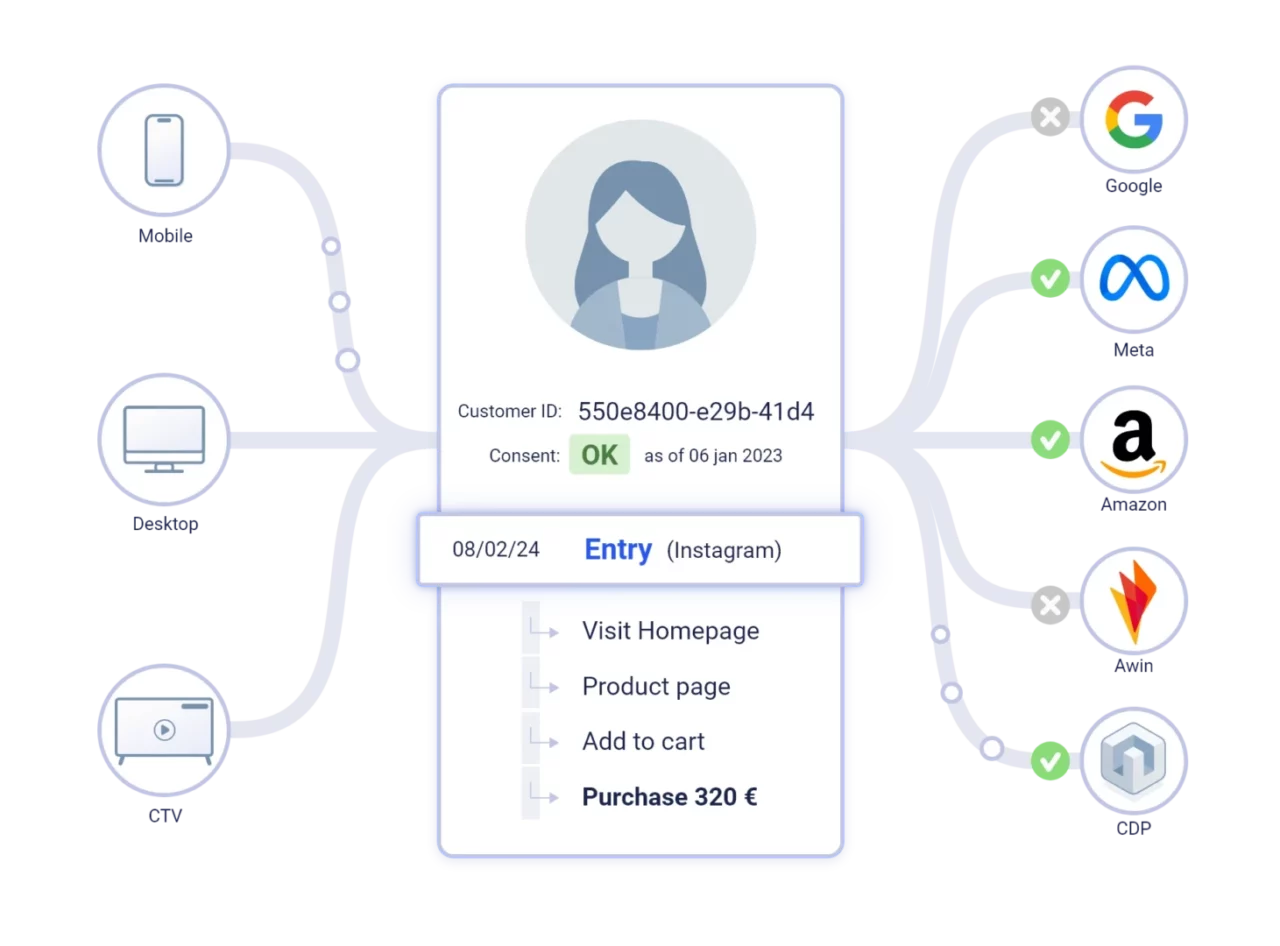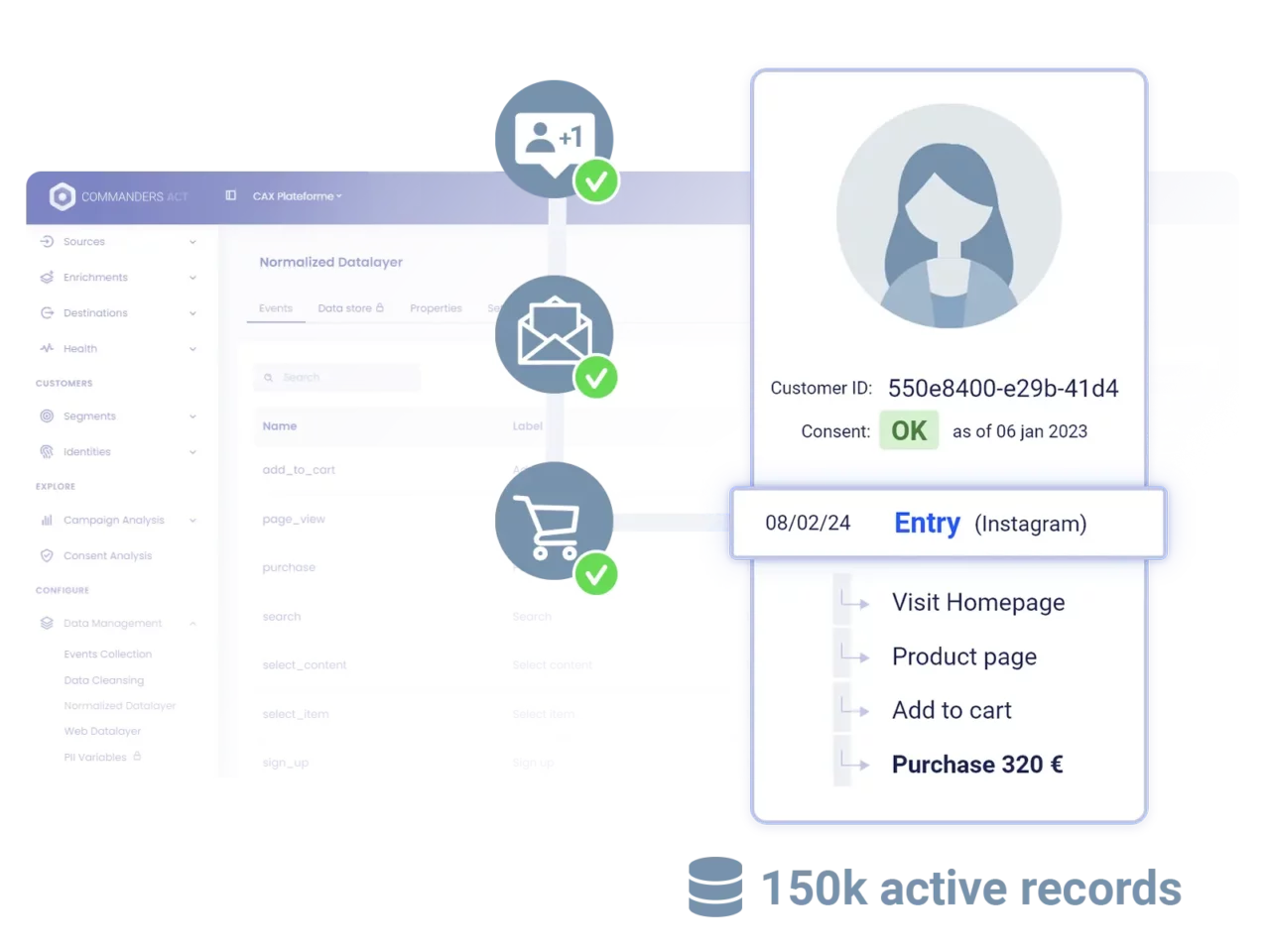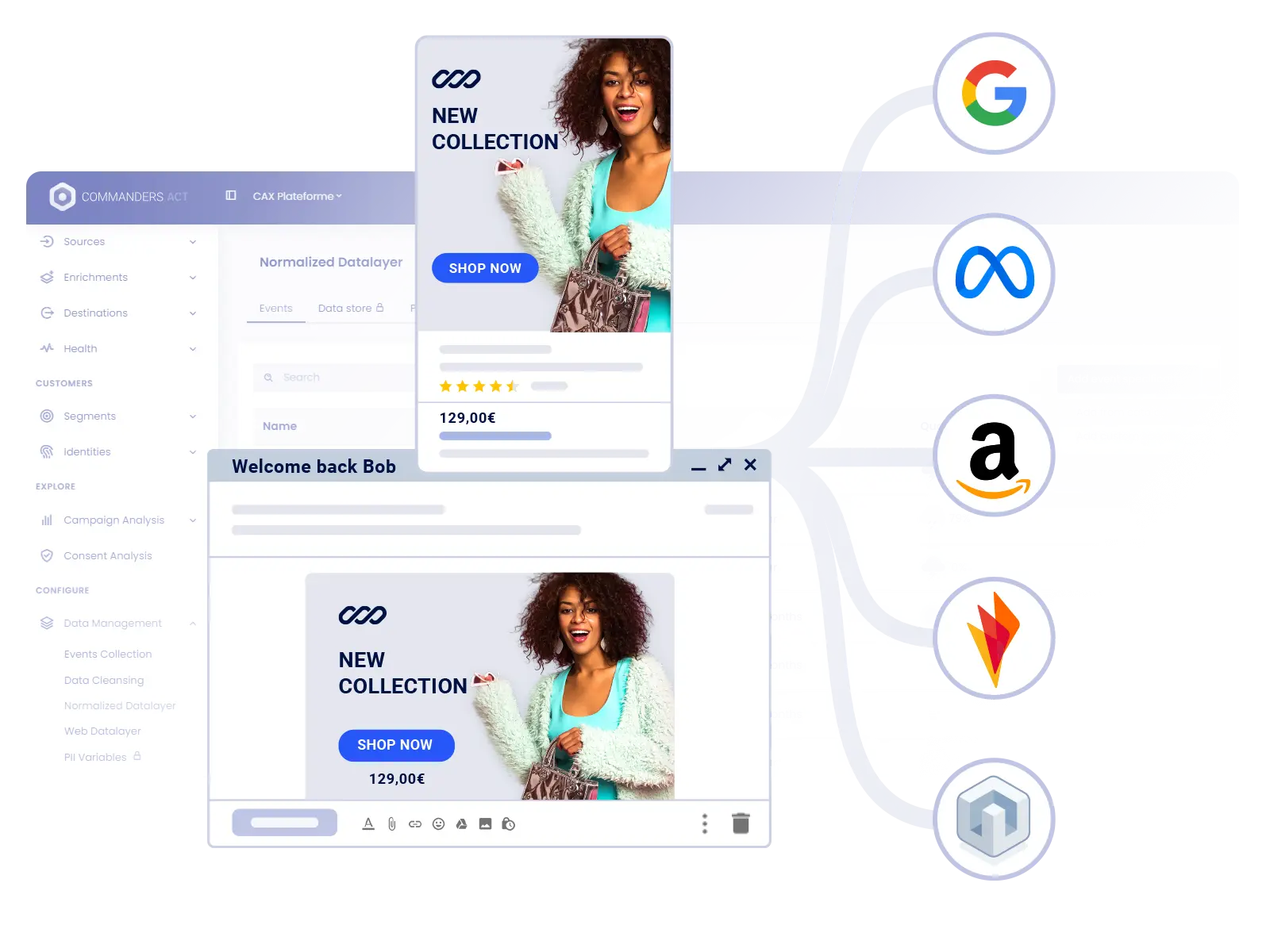Real-time CDP
Customer Segmentation & Activation
Store & enrich customer profiles in a centralized datamart. Build custom audiences & deliver the right message at the right moment.

Use Cases
Enrich Customer Profiles with CRM
Want to personalize experiences based on past orders? Combine & constantly enrich customer profiles with offline data coming from your CRM.
Detect Churn Before it Happens
Prevent customers from losing interest in your brand by sending new, attractive offers to inactive or passive customer segments.
Holistic View of Customers
Identity resolution is the key to reconcile scattered customer data. With Real-time CDP you have the power to mix and match data from different sources to deliver highly personalized, activation campaigns.
Identity Resolution
Consolidate customer information across disparate sources and reconcile profiles through our identity resolution features to improve marketing effectiveness.
Omni Sources Customer Data
Consolidate customer information across disparate sources and reconcile profiles through our identity resolution features to improve marketing effectiveness.
Recover Lost IDs
1st-party cookies are subject to time limits. Benefit from our cookie recall features to extend life of cookies or even rewrite deprecated cookies on the fly.


Centrally Manage Audience Segments
Create segments based on dozens of filters & criteria. Enable dynamic updates of audiences to keep your marketing initiatives aligned with customer privacy.
No-code Advanced Segmentation Engine
No technical skills required. Create segments based on dozens of filters & criteria coming from any data source used to fuel your Customer Data Platform: Ads, On-site behavior, Purchases, Products viewed or bought.
Update Audiences on the millisecond
Enable dynamic audience updates of segments, keeping customer data aligned to the changing patterns of behavior, ensuring that your marketing initiatives are aligned with customer personal preferences.
Omni Destinations Audience Sharing
Increase campaign efficiencies and improve personalization by sharing audiences with hundreds of Client- & Server-Side destinations in full compliance with user privacy choices & regulations.
Progressively Deploy Personalization Scenarios
Use your segments & audiences on the ad platforms to deliver rich, relevant ads on your own properties to offer your customers highly personalized brand & product experiences.
Real-Time Site Personalization
Any entry or exit within an audience will immediately trigger a request to the relevant ad platform or personalization tool. Changing your marketing delivery in milliseconds is the best way to deliver the right message at the right moment.
Data-driven Email Campaigns
By segmenting your email list based on behavior, you can send targeted emails that are more likely to resonate with your audience and deliver real results.
Cross-Device Consistant Experiences
With cross-device identity resolution, make sure your customers are exposed to consistent messages across devices and channels.
